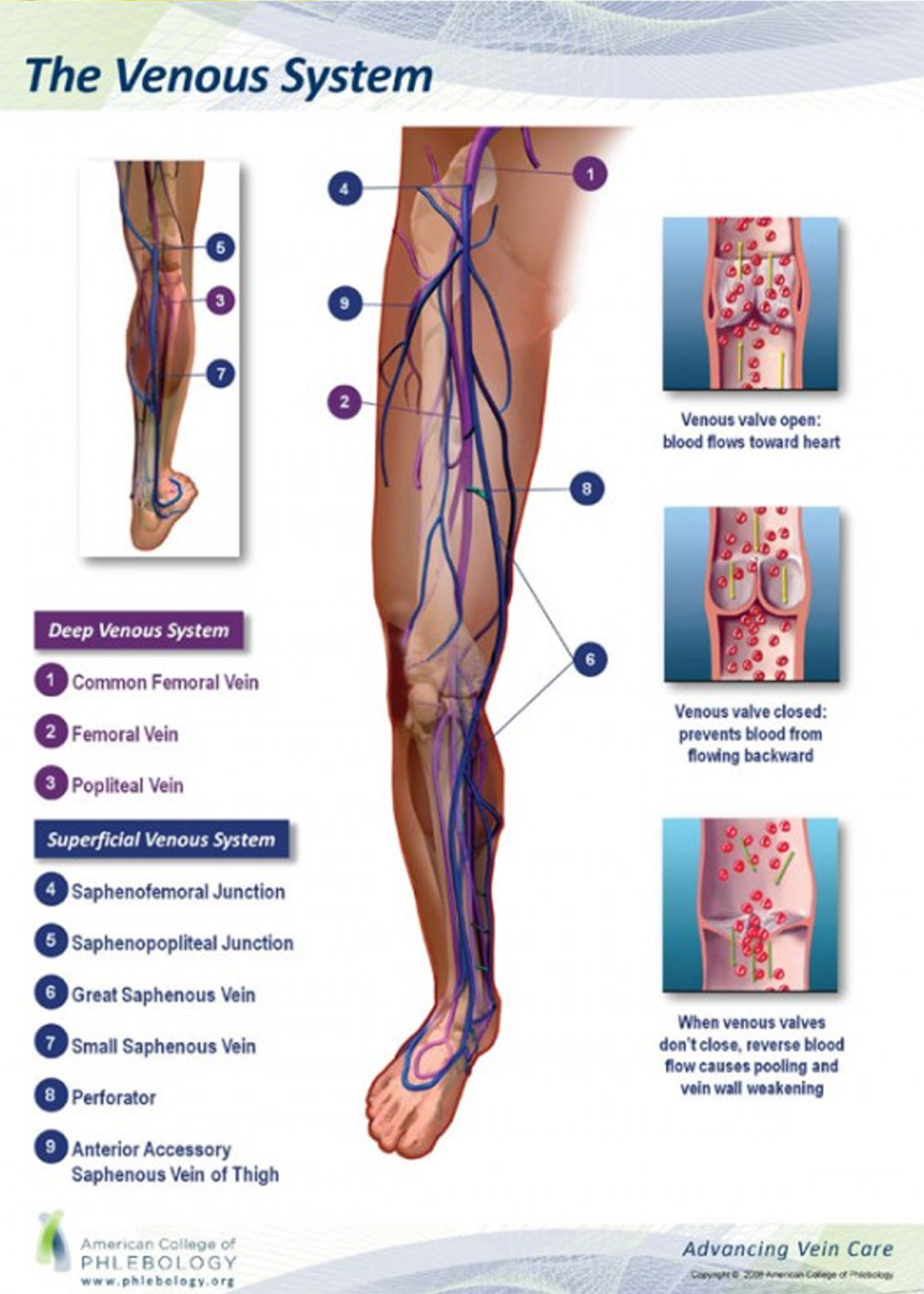Physicians Page
CEAP CLASSIFICATION SYSTEM
Chronic Venous insufficiency is caused by venous reflux, or backward flow in the venous system. This produces venous hypertension, magnified in distal parts of the legs where gravity exerts its effects to the greatest degree. Recalling that venous flow in the legs normally goes from distal to proximal and superficial to deep, valve failure along the way leads to elevated pressures in the venous segments with then progressive failure of neighboring valves.
A consensus conference of leading phlebologists has developed the C.E.A.P. classification of venous insufficiency to standardize diagnosis and better judge the outcomes of therapy. CEAP stands for:
· Clinical
· Etiologic
· Anatomic
· Pathophysiologic
The most important part of the classification system is the first, the Clinical situation. The following list details the changes of vein disease in order of increasing severity and consequence.
· C1 Spider telangiectasis or reticular veins
· C2 Varicose veins
· C3 Varicose veins with edema
· C4 Varicose veins with skin changes of venous stasis
· C5 Varicose veins with stasis and healed ulceration
· C6 Varicose veins and active open venous ulceration
Recommendations for new patients with venous disease can be based on the Clinical situation as follows:
· CEAP 1: Refer only if symptoms suspicious for underlying venous reflux
· CEAP 2: Refer routinely to vein specialist for physical exam and duplex ultrasound
· CEAP 3-5: Refer quickly to vein specialist for physical exam and duplex ultrasound
· CEAP 6: Refer urgently to vein specialist for duplex ultrasound exam and to Wound Care Center for ulcer assessment

